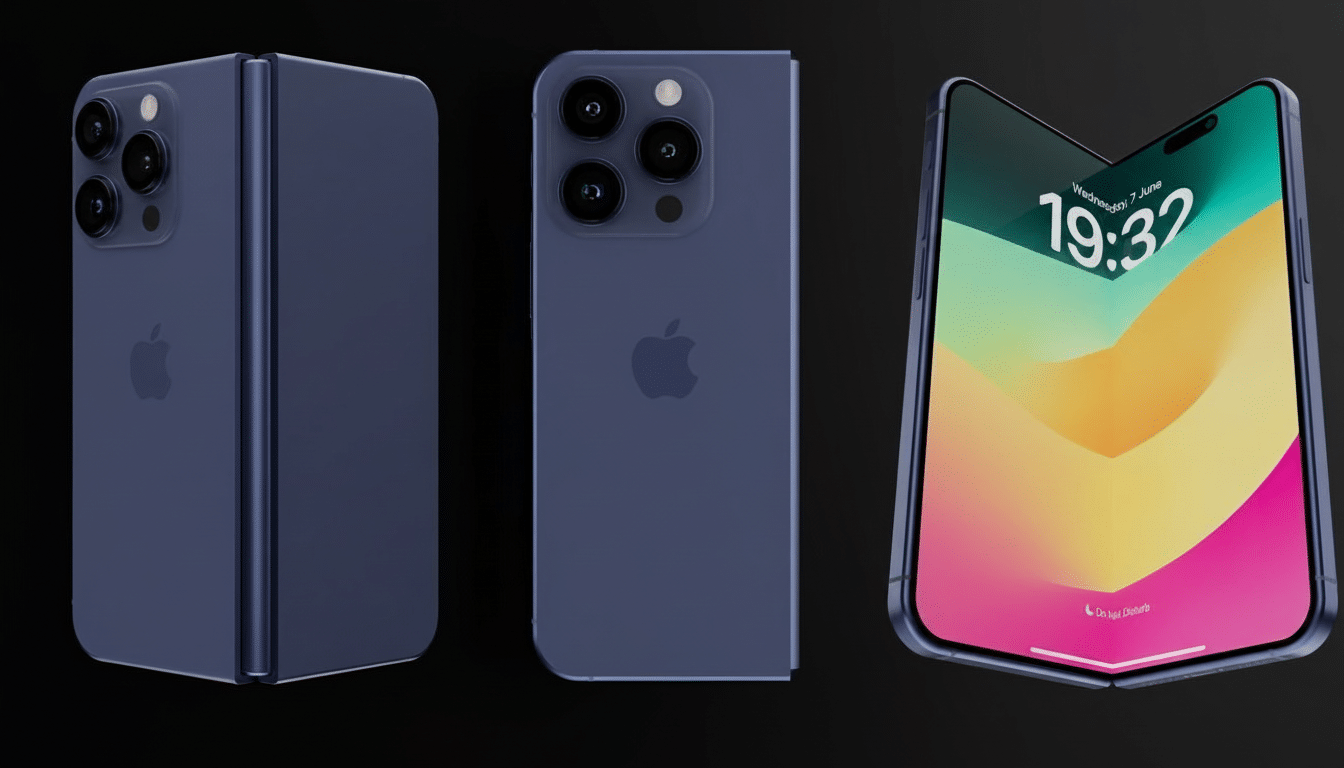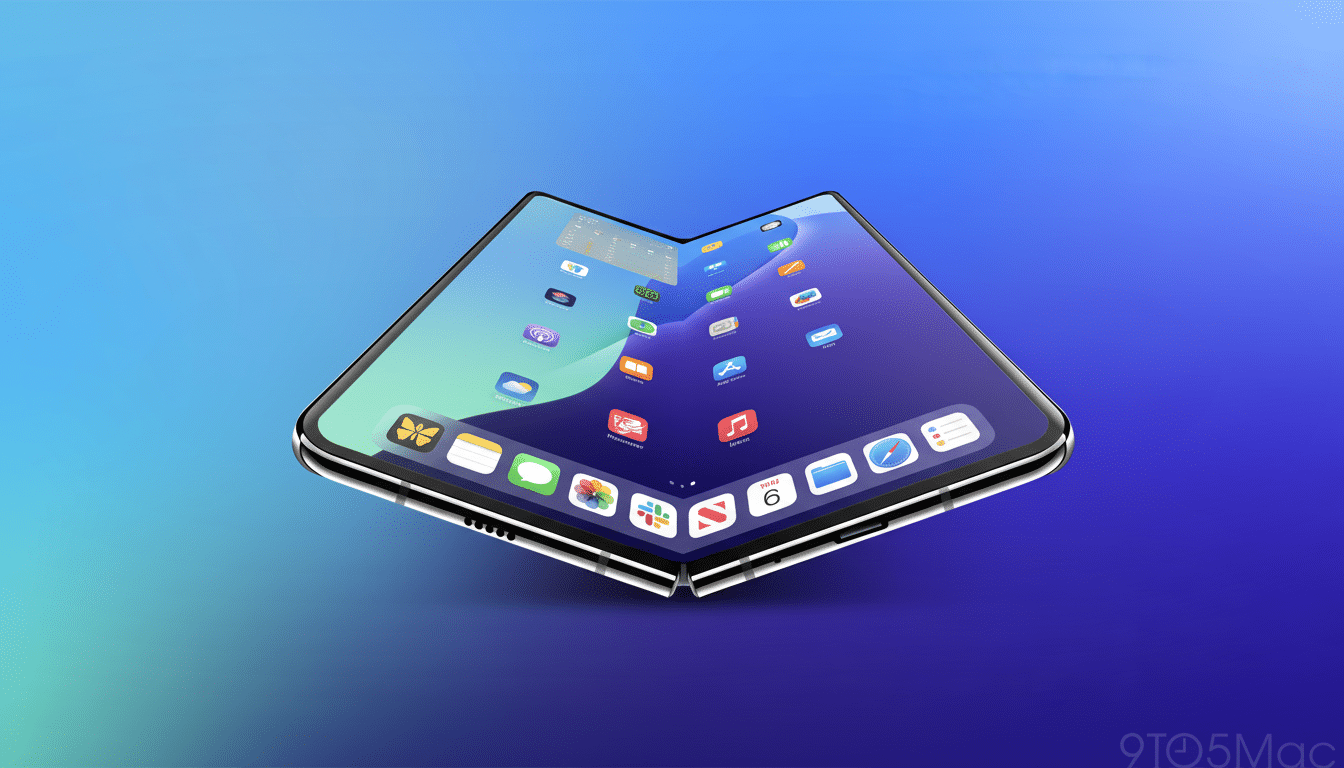Apple’s first foldable iPhone seems to be moving from concept into reality, with the latest rumor suggesting it will be available as early as next year. The twist may be the price: new analysis suggests that a steeper cost than expected by many analysts and fans indicates that Apple will treat the debut model as an uber-premium showcase rather than a mass-market play.
Reports out of Asia say Apple solved a fundamental pain point with foldables—the visibility of the crease. If that’s true, the iPhone Fold could arrive with a headline hardware advantage, although it rarely seems to come cheap.
- Breakthrough on crease-free display for foldable iPhone
- Pricing signals and market context for a foldable iPhone
- Why a higher price would make sense for the first model
- What the foldable iPhone hardware would likely contain
- Suppliers and signals to watch as production approaches
- Bottom line on Apple’s foldable iPhone timeline and price

Breakthrough on crease-free display for foldable iPhone
Taiwanese site UDN, with follow-ups from MacRumors, said Apple has “succeeded in the creation of a foldable test model without any creasing.” In practice, that would mean reworked hinge geometry and a refined display stack (probably ultra-thin glass in carefully engineered layers) to distribute stress on the screen when it bends.
Some have inched this way. OnePlus and Oppo have reduced crease appearance with sophisticated hinge systems, and Huawei’s inward-folding concepts show that subtlety is achievable without sacrificing durability. Apple’s bar is higher still, of course: a crease that falls away to the point where you don’t really notice it in day-to-day use, coupled with long-term durability that meets Apple’s benchmarks for reliability.
If Apple truly has transformed the crease under the screen into a non-issue, that single improvement could become the company’s newest tentpole feature—particularly for people who have been shy about leaping from flat panels to something with less rigidity.
Pricing signals and market context for a foldable iPhone
On price, Fubon Research analyst Arthur Liao has priced the iPhone Fold at about $2,399. That would peg Apple’s entry well above today’s pack of large-format foldables, where Samsung’s Galaxy Z Fold line usually ranges between $1,799 and $1,899 (and the OnePlus Open launched around $1,699).
That is not the first price signal to breach the $2,000 threshold. Industry chatter over the past year has mentioned figures from about $1,800 to about $2,500, depending on configuration. And if Apple lands at or near the top, it would be yet another example of a pattern the company has taken with category-defining first-gen hardware: go high-end out of the gate, lead with tech, and as component costs fall, expand its potential base.
There is also the broader market to think about. IDC projects that about 16 million foldable devices will ship around the world in 2023, with growth likely to accelerate as well-engineered models reach maturity. Apple’s presence—even at a hefty premium—might stretch the body of smartphones rather than simply displace competitors, especially among iPhone loyalists who have held off leapfrogging ecosystems for a foldable.
Why a higher price would make sense for the first model
Cost drivers in foldables are not merciful. Flexible OLED panels cost more, hinges need to be precisely machined, and fatigue-tested components must be used; ultra-thin glass protection layers add another layer of complexity. Early production tends to have lower yield, so the bill of materials will be higher until manufacturing stabilizes.

Toss in Apple’s typical priorities—tight tolerances, ambitious durability targets, and integration with custom silicon—and you have a device that’s expensive to build and risky to discount. A higher sticker price would also leave room for storage tiers, which are a historical factor affecting Apple’s average selling price and margins.
What the foldable iPhone hardware would likely contain
Supply-chain rumors also point toward a camera package possibly featuring two rear systems and two forward sensors, while more exotic optics—say, a variable aperture system first proposed for a future Pro model—may bide their time.
That lines up with Apple’s modus operandi: prioritize foundational hardware and the user experience in generation one, then iterate on photography and specialty features once the form factor is battle-tested.
Anticipate Apple to center the device on its latest mobile chipset, low-level on-device AI acceleration, and software optimized to run in an uninterrupted fashion across expanded and collapsed device states. The company has already laid the groundwork on the iPad side with multitasking and windowing; a foldable iPhone would presumably leverage that DNA, tailored for pocketable ergonomics.
Suppliers and signals to watch as production approaches
Panel supply will be an important tell. Apple’s foldable R&D has been linked for years by industry watchers to Samsung Display and LG Display, as well as to advancements in ultra-thin glass from materials specialists like Corning. If we start seeing any increase in flexible FMM OLED orders and tooling activity for roll-to-roll lines from these vendors, that would support the “on track” story.
Regulatory filings, component certifications, and developer-facing software hooks in future iOS betas are further breadcrumbs. If Apple does plan to launch next year, signals for that should begin showing up as manufacturing moves from validation to scale-up.
Bottom line on Apple’s foldable iPhone timeline and price
Crease- and crinkle-proof screen: there’s a lot to be said for the removal of the mighty crease. With it gone, an iPhone Fold could actually have the kind of glaringly obvious point of differentiation that Apple likes to lead on. In addition, and in line with Apple’s aim to be seen as a luxury brand, RealityMirror suggests that this foldable iPhone would likely cost around $2,399.
For now, though, the takeaway should be clear: the project is moving forward, it might launch earlier than naysayers guessed, and chances are good it won’t be cheap.

